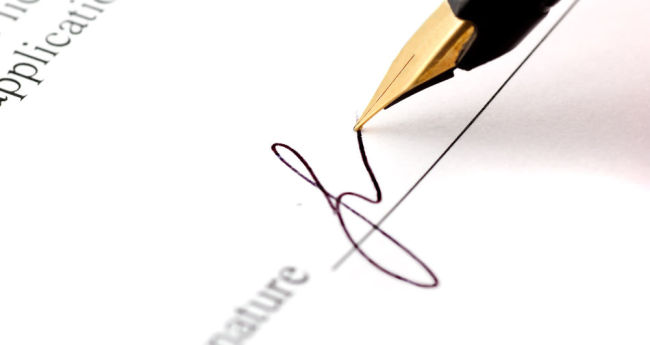Secucen to build e-signature platform for hospitals
By Lim Jeong-yeoPublished : June 2, 2016 - 13:29
On May 25, Secucen (CEO Kim Je-ho), a fintech security company, announced that it is currently conducting a project with large domestic hospitals to build an electronic signature platform. This e-signature solution will replace handwritten signatures with biometric information for the purpose of executing operation permissions, among others. The purpose of the platform is to prevent potential factors that could lead to medical disputes among medical institutions, patients, and patients’ families.

Secucen is a startup that developed Korea’s first platform for identification verification and e-signatures based on the recognition of biometric information, including fingerprints, irises, and faces. Its technology is applicable to all financial service channels, such as PCs, ATMs, and mobile devices, and is used mainly for financial and real estate transactions. On May 3, Secucen’s e-signature solution was applied to real estate transactions in Seocho-gu, Seoul, which was selected as a model area for electronic real estate transactions by the Ministry of Land, Infrastructure and Transport. CEO Kim Je-ho revealed that the company is also engaged in in-depth discussions with insurance companies and banks.
Among the biometric verification information currently used for platforms and devices, Secucen uses mainly fingerprints. At teller windows in banks, fingerprint recognition now enables customer ID verification and e-signature simultaneously. Fingerprint registration is an option for customers, depending on their needs, but e-signature does not require such registration. Once the fingerprint information possessed by the Ministry of Government and Home Affairs or the National Police Agency is disclosed, the use of fingerprint recognition solutions is expected to increase significantly.
Secucen has established reliable safeguards against information security risks by developing not only technology for the encryption of biometric information but also a type of separation technology. This separation technology divides each customer’s biometric information into two, with one part kept by the provider and the other by a certification agency, such as the Korea Financial Telecommunications and Clearings Institute. Only when the two encrypted pieces of biometric information are combined can they be used to provide ID verification.
Biometric recognition systems require a separate scanning device, which can be connected to a PC, mobile device, tablet, or ATM using a USB or micro USB cable for mobile phones. CEO Kim said, “More than 86,000 ATMs across the country are equipped with mobile phone connectors for people with visual impairments, and the device can be easily connected to them.” He went on to say, “We are also working on ways to make the device into a chip so that it can be embedded into mobile devices.”
Founded in 2012, Secucen has since been selected to be an incubation business at the Gyeonggi Center for Creative Economy & Innovation and is currently collaborating with KT, its main business partner.
By Hwang Jeong-seop (jshwang@heraldcorp.com)



![[Exclusive] Korean military set to ban iPhones over 'security' concerns](http://res.heraldm.com/phpwas/restmb_idxmake.php?idx=644&simg=/content/image/2024/04/23/20240423050599_0.jpg&u=20240423183955)

![[Graphic News] 77% of young Koreans still financially dependent](http://res.heraldm.com/phpwas/restmb_idxmake.php?idx=644&simg=/content/image/2024/04/22/20240422050762_0.gif&u=)



![[Pressure points] Leggings in public: Fashion statement or social faux pas?](http://res.heraldm.com/phpwas/restmb_idxmake.php?idx=644&simg=/content/image/2024/04/23/20240423050669_0.jpg&u=)









